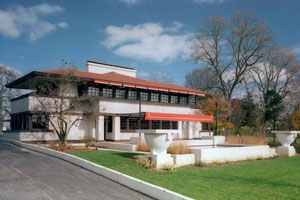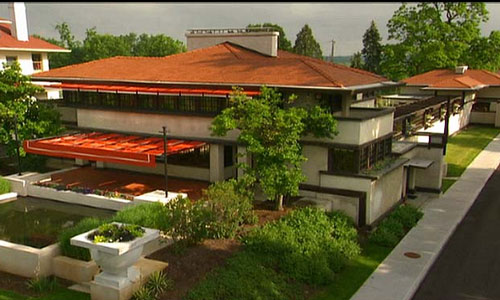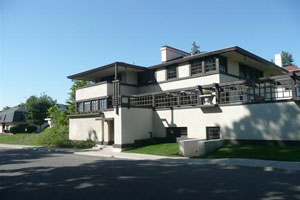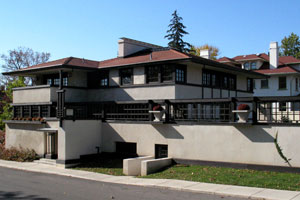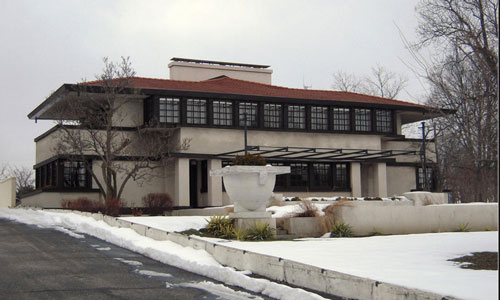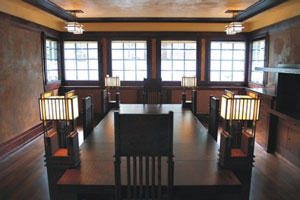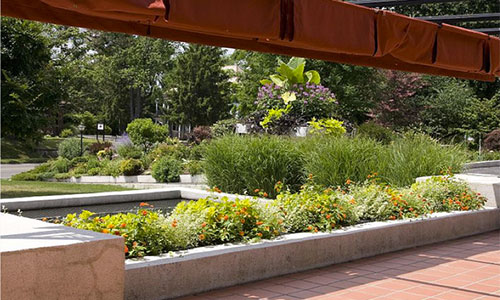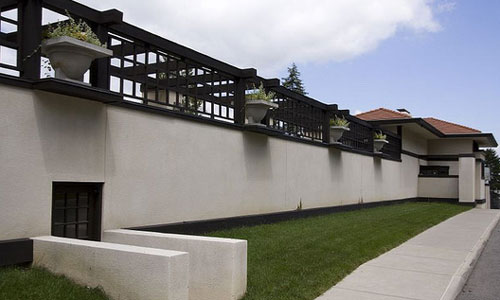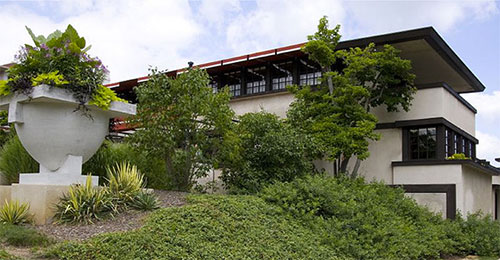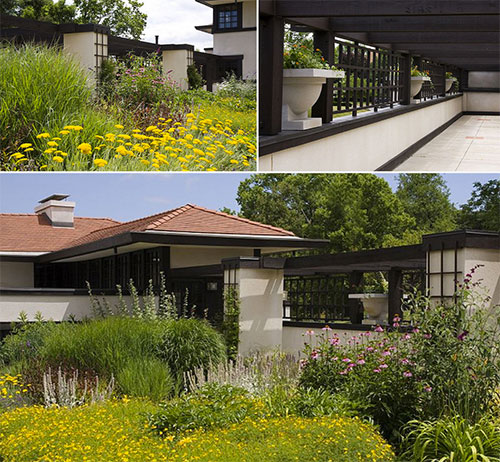The rebirth of Frank Lloyd Wright's Westcott House
Watch this amazing video of the restoration of Westcott House, Frank Lloyd Wright’s 1908 Prairie Style* masterpiece.
Springfield, Ohio’s Westcott House was built in 1908 for Burton J. Westcott (of The American Seeding Machine Company) and his family. Built in the Prairie Style, of which Wright was the most famous proponent, is characterized by horizontal lines, flattened or often hipped roofs with wide overhangs, and windows that formed horizontal bands around the house.
Wright, and other architects of the style, felt that the Victorian homes of the time were boxy and confined. Their new designs featured longer rooms with open plans, often room dividers in leaded glass, and extensive use of custom and built in furniture. A unified design aesthetic was therefore achieves as the interior and exteriors were often conceived of as one piece.
As with most Mid-Century Modern homes, the extensive use of windows (often series of narrow windows in groups as opposed to modern houses that use large, single paned or expanses of glass) were a device to bring the outdoors into the home. Landscaping was thus an important part of the entire Prairie School aesthetic. Wright connected the Westcott House to it’s stables with a long pergola that extended the horizontal aspect of the house to much of the property.
After both Mr Westcott and his wife had died by 1926, the house was sold several times and eventually fell into disrepair. By 2001 the Westcott House Foundation was formed and, after extensive restoration, the house was opened to the public in 2005. Today it stands as a testament to the genius of Frank Lloyd Wright and a beautifully preserved example of the Prairie style he encouraged across the Mid West.
Check out their website for more information on the Westcott House, the foundation, and events. Find out more about Frank Lloyd Wright.
* The term Prairie Style was popularized after Frank Lloyd Wright’s plan for what he called “A Home in a Prairie Town” appeared in a 1901 article in The Ladies Home Journal. The early Prairie Style houses were of wood and plaster or board and batten but soon were made of brick with stone accents and eventually concrete blocks. Wright’s forward thinking and embracing of modern innovations in construction techniques always pushed his work to the forefront of what would be considered Modern.

